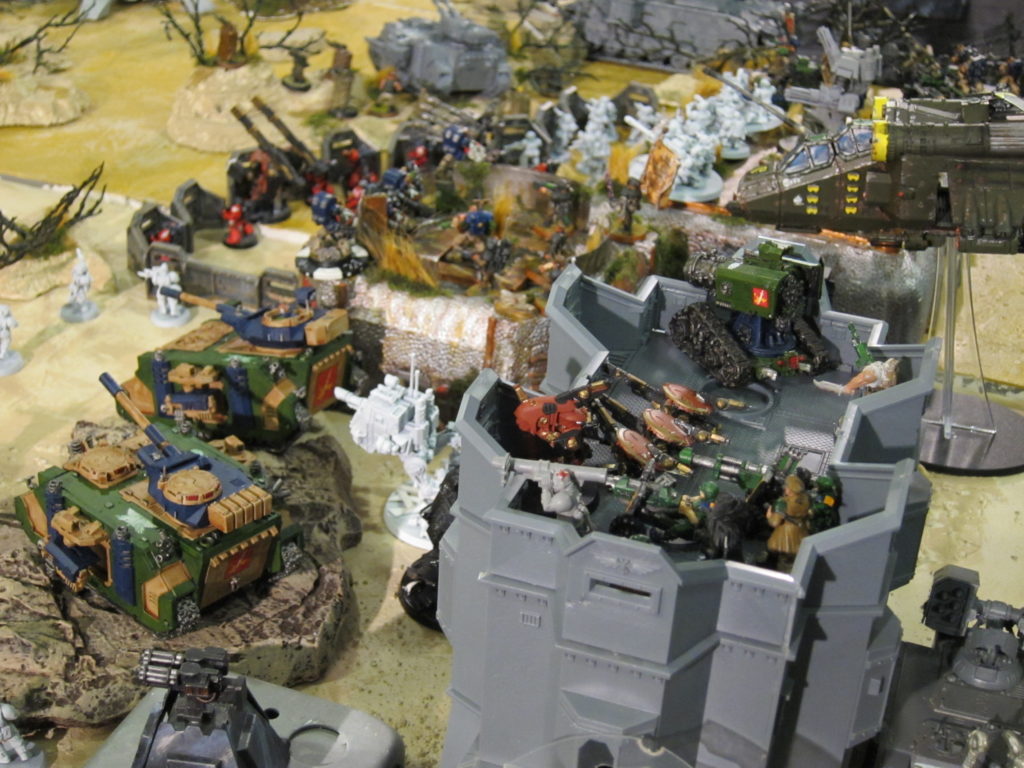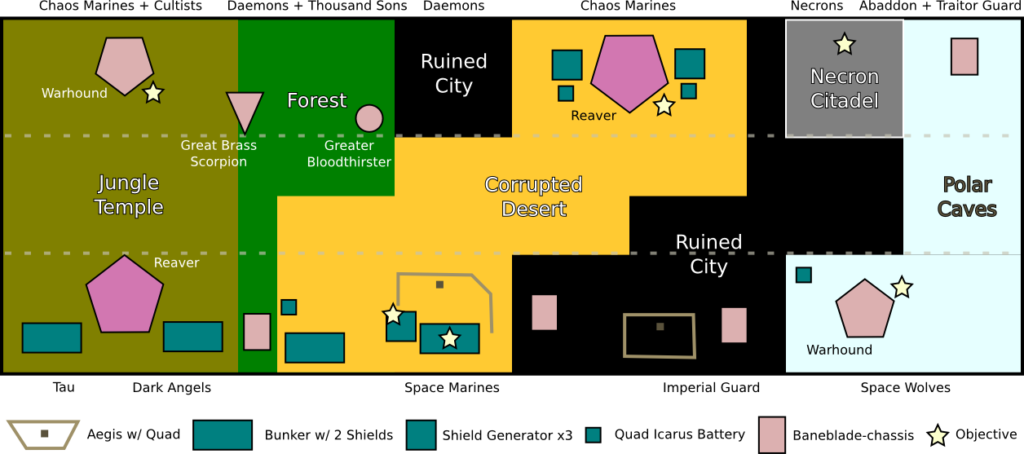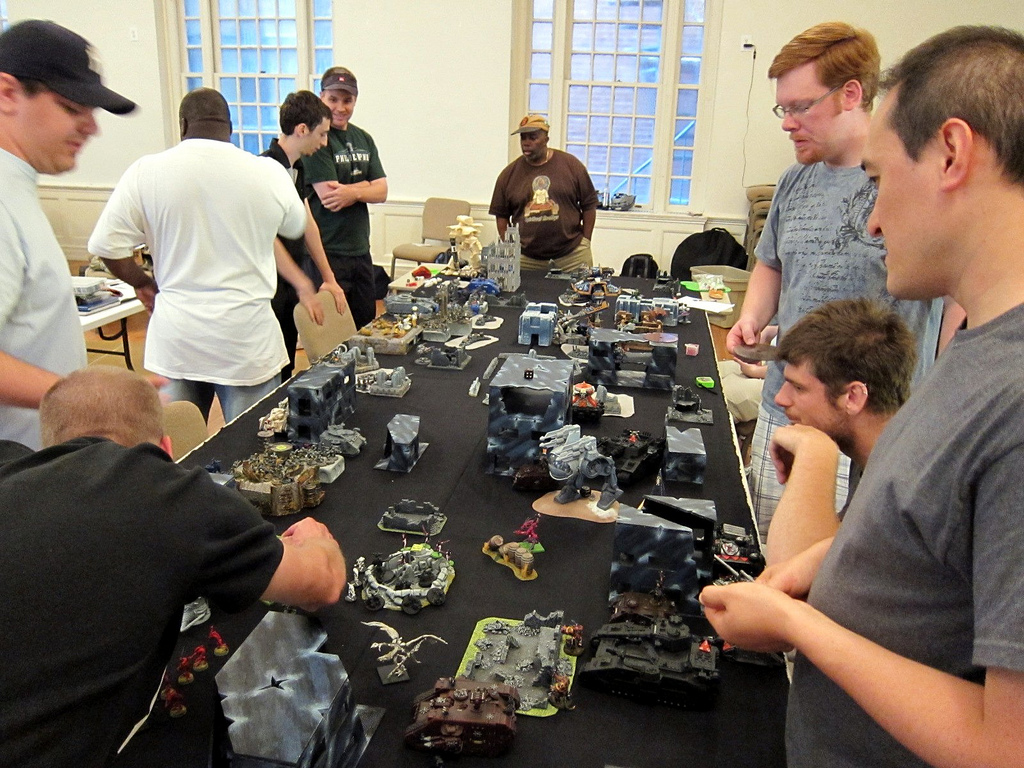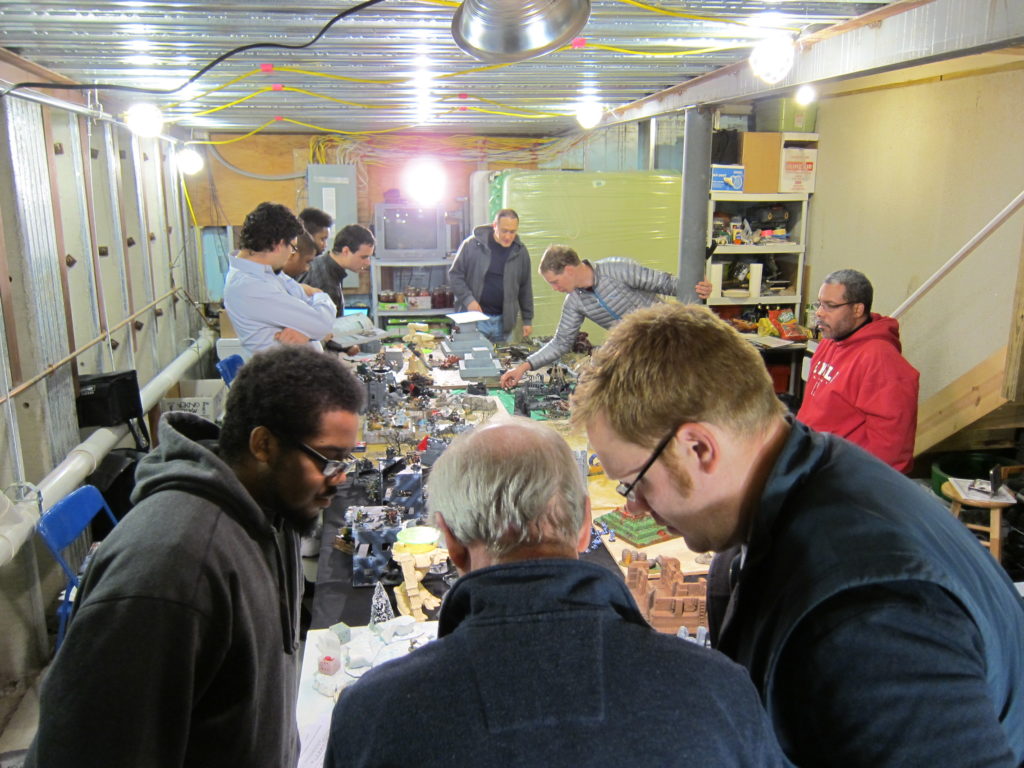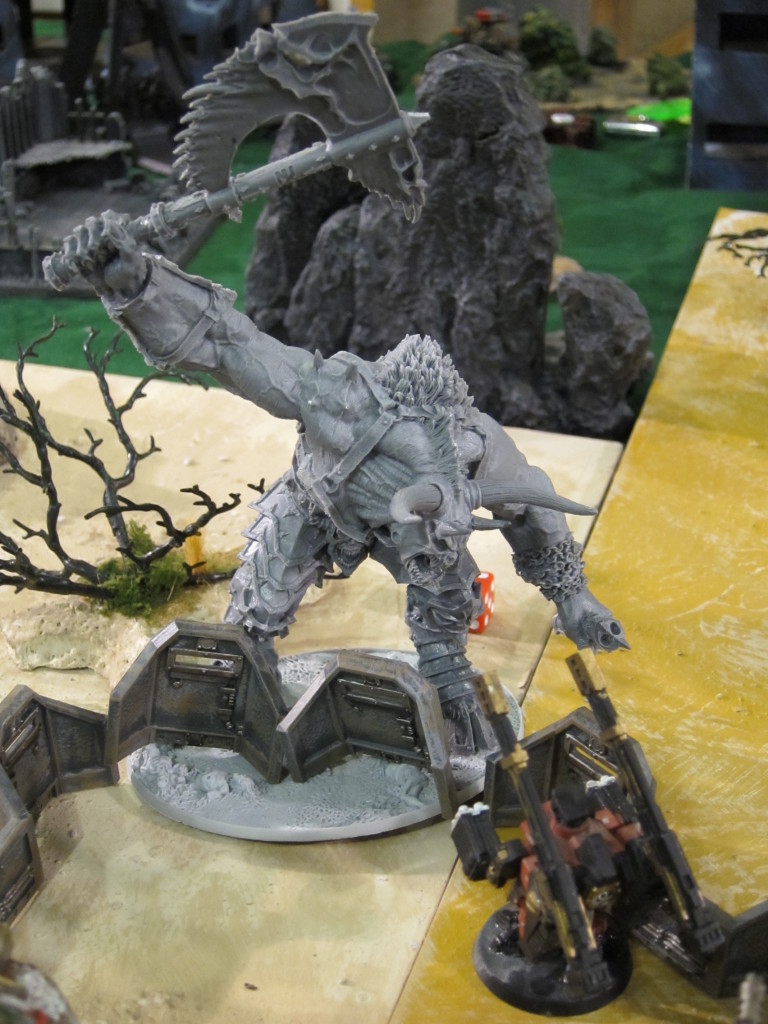One of the challenges in hosting a Warhammer 40,000 Apocalypse game or similar mega-battle is simply the sheer size of it. With some 9,000 to 50,000 points or more on the table and a handful to dozens of players, these fights need a lot of space and potentially a huge gaming table. This article goes over some recommendations and rough calculations on table sizes and space requirements for such events.
Short Edges
The biggest determinant in the required venue space is of course the game area itself. Easiest to establish of that is the short axis. In a pinch, Apocalypse battles can be played on a 4′ wide table just like standard 40k games, particularly at the lower end of the points spectrum and with relatively regular armies. However, the table should be wider once there’s more than ~9,000 points or so in play or players start fielding more apocalyptic units like Titans and large flyers. Apocalypse is where all those weapons with 48″, 72″, or infinite range really shine! Increasing the width also creates more surface area and lowers the density of models on the table, affording more mobility and tactics, without having an excessively long table.
Critically, deployment zones generally must still be kept at least 24″ apart. Otherwise a vast array of game assumptions start to break down. Most obviously, much under that and many assault units will be able to reliably enact Turn 1 charges. Less obviously but just as important, many short-range, high power shooting units that would normally be forced to move into no man’s land for maximum effect will be more able to simply camp out and shoot from Turn 1. Consequently, on 4′ wide table there isn’t really space to increase deployment zones beyond the standard Dawn of War 12″. At higher points values there may simply not be enough space to deploy everything in that space, particularly with a fair bit of terrain or players bringing hordes or large quantities of superheavies.
On the flip side, deployment zones generally must not be much more than 24″ apart. Beyond that and the opposite assumptions start breaking down: Assault units won’t get into combat quick enough, and short-range shooters won’t be able to move forward and start pounding.
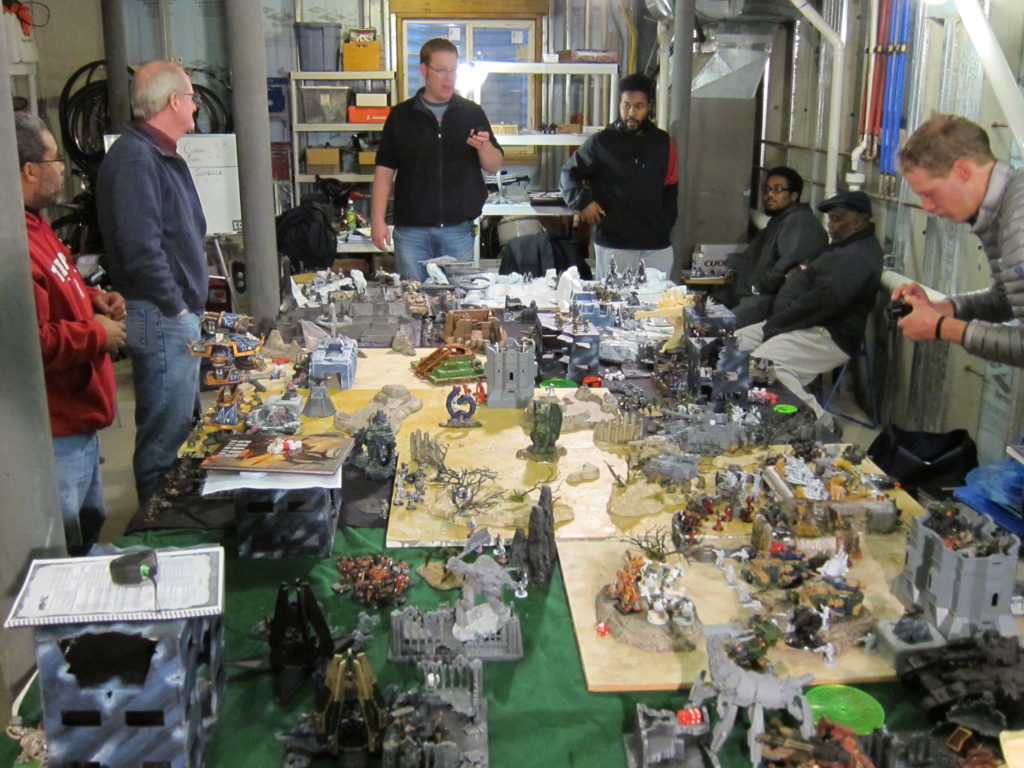
A pause in the action to score the ongoing battle and a view of half the 6×17 table in the 2014 PAGE Apocalypse.
Similarly, for tables much beyond 6′ wide, many units and even whole factions just won’t have the mobility to reliably cross the table and contest objectives or assault the enemy. Asking armies to advance units much more than about 5′ across the board in a 4–6 turn game—fighting bad guys all the while, diverting around units of both sides, and slogging through terrain—is a tall order. That’s true even of armies with many transport, deep strike, outflanking, and other mobility options, but especially true of the less fortunate factions.
As another critical but potentially overlooked note, beyond 6′ wide it will be very difficult to manipulate models at the center of the play area. Most people can somewhat reasonably reach about 3′ across a game table.
All in all, 5–6′ wide probably makes the most sense for medium to large scale Apocalypse tables. That enables spacious 18–24″ deployment zones, retains the 24″ no man’s land buffer, and makes crossing the board a transport and mobility challenge but not overly so.
Long Edges
The long edge of the table is much more flexible. There are several variables that can be adjusted to grant some leeway: Greater or lesser density of models, more or less terrain, etc.. Some battles may also just require less space depending on the factions in play: A classic Ork vs Imperial Guard showdown will have insanely more models and require much more space at a minimum than a Grey Knights vs Chaos Terminators matchup.
A rough but good rule of thumb is 1′ in table length per 750–1500 points on a side. Even at the low end this is quite a bit more dense than a standard 40k game, though using a wider table compensates greatly. That increased density does have some consequences on mobility and tactics. However, it strikes a balance between relatively standard play and effective movement with the sheer feasibility of the physical table size and associated venue space. Much more dense than this and games will be very cramped. Much less dense and an extraordinarily large table and venue will be required.
Another way to think about this calculation is that the table realistically needs 2–4′ in length per player on each side. Anything less will be too cramped to be comfortable or efficiently playable as they keep bumping into each other and have no room to move around, as well as having absolutely no personal space for a long day of gaming. Anything more and, again, a massive table and space would be required.
Logistical Space
Beyond the core table dimensions, a good amount of space is needed for players to move around as well as to set out models, books, food, and other items.
To be able to comfortably move around and have some personal space, players realistically need 2 to 3 feet of space surrounding the table. Both the long edges and at least one short edge, ideally both, require this buffer.
In addition, 2–4 square feet per player or 3,000 points is needed to arrange reserved or removed models during play. This doesn’t necessarily need to be immediately by each player’s zone. It could be tables or shelves off to the side. Shelves in particular will minimize the venue space required by utilizing vertical space. Similarly, benches, boards, or crates under the table can provide this logistical space in an efficient manner. The latter is typically not ideal though due to more difficult access, limited light, models getting kicked or otherwise krocked, and higher chances of simply forgetting about reserves!
Beyond all that, a few miscellaneous tables or other surfaces should be available to set down food, scoring sheets, rulebooks, and other communal and miscellaneous materials.
Total Numbers
Taking that all together, some very rough but reasonable figures for differently sized games are:
- 3 players and 9,000 points per side
4×6 to 6×12 table
8×12 to 15×20 venue - 6 players and 18,000 points per side
5×12 to 6×24 table
9×18 to 15×32 venue - 10 players and 30,000 points per side
5×20 to 6×40 table
9×26 to 15×48 venue
Successful dimensions for some of the more notable Apocalypse battles held by the Philadelphia Area Gaming Enthusiasts club include:
- 11 players total, ~11,000 points per side, 5×16 table in a large ballroom—notes:
- 14 players total, ~13,000 points per side, 5×15 table in a dance/theater parlor—photos, notes
- 11 players total, ~21,000 points per side, 6×17 table in a large unfinished basement—report, notes
- 17 players total, ~25,000 points per side, 6×20 table in a large unfinished basement (planned)—notes
Each of these matches featured great tabletop action with epic fighting and room to maneuver, had enough space for both models and humans to survive, and made great use of a variety of venues.
Conclusion
All of these are of course rough and flexible numbers, but hopefully they provide some useful guidance for planning Apocalypse games.
